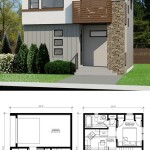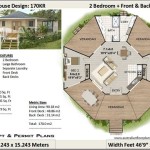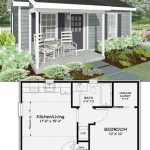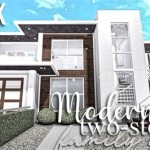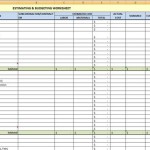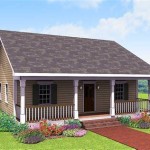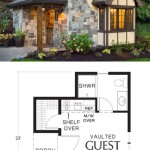Simple 2-Bedroom Floor Plan With Dimensions in Meters and Centimeters
Designing a home, even a simple one, requires careful consideration of space and functionality. A well-planned 2-bedroom floor plan can maximize living space for individuals, couples, or small families. Accurate dimensions, expressed in both meters and centimeters, are critical for construction, interior design, and furniture placement. This article outlines key considerations for a simple 2-bedroom floor plan, focusing on practical dimensions and efficient space utilization.
The dimensions provided are intended as guidelines and may need to be adjusted based on individual needs, site constraints, and local building codes. It is always recommended to consult with an architect or structural engineer for a professional assessment and detailed blueprints. Furthermore, optimizing natural light and ventilation are vital aspects of any floor plan, contributing to a healthy and comfortable living environment. Attention to these details enhances the overall quality of life within the home.
Essential Components of a 2-Bedroom Floor Plan
A functional 2-bedroom floor plan typically incorporates several key areas: the primary bedroom, a secondary bedroom, a shared bathroom, a living area (which might include a combined living and dining space), a kitchen, and potentially a balcony or patio depending on the layout and location. Each of these areas needs to be adequately sized to ensure comfortable use and efficient flow between spaces. The overall dimensions of the floor plan must accommodate these components while adhering to any specific architectural or structural requirements.
The living area serves as the central hub of the home, requiring sufficient space for seating, entertainment, and circulation. The kitchen should be designed for practicality, incorporating adequate counter space, storage cabinets, and appliance locations. Bedrooms should provide enough room for beds, wardrobes, and possibly a small desk or seating area. The bathroom should be designed for functionality and accessibility, ensuring comfortable use of all fixtures. Careful consideration of these components contributes to a well-balanced and livable 2-bedroom home.
When considering the location of each component, think about the traffic flow. A hallway should allow easy access to each bedroom and the bathroom. The kitchen is usually located adjacent to the living and dining area for convenience. The placement of windows and doors also influences the layout and how natural light illuminates the space. Each element contributes to a comfortable and functional living environment.
Consider sound isolation, especially between bedrooms and the main living zone. Soundproofing materials can be used in walls to minimize noise transfer. The location of the bedrooms away from high-traffic areas can also contribute to a quieter environment. Carefully planning for these details leads to a more comfortable and private living space.
Detailed Dimension Examples and Space Allocation
Let's consider a hypothetical 2-bedroom apartment with an overall area of approximately 70 square meters. This equates to 700,000 square centimeters. This space will be divided amongst each of the different rooms, as explained in the following paragraphs.
Living Area: A comfortable living area might measure approximately 4.5 meters by 5 meters (450 cm x 500 cm), providing a total area of 22.5 square meters. This provides enough space for a sofa, chairs, a coffee table, and a television unit. The room shape can be slightly irregular, but maintaining these approximate dimensions is a good starting point.
Kitchen: A functional kitchen could be 3 meters by 2.5 meters (300 cm x 250 cm), totaling 7.5 square meters. This allows for a countertop along one wall, a sink, and sufficient space for appliances like a refrigerator, oven, and cooktop. Consider the kitchen triangle rule, where the sink, refrigerator, and stove are placed in a triangular layout to maximize efficiency. The layout should allow the user to move freely between the different stations.
Primary Bedroom: The primary bedroom could measure 3.5 meters by 4 meters (350 cm x 400 cm), totaling 14 square meters. This allows for a queen-sized bed, bedside tables, and a wardrobe. Enough space should be left for walking around the bed and accessing the wardrobe. The location of the windows and the door should also be taken into consideration when planning the layout of the furniture.
Secondary Bedroom: The secondary bedroom could be 3 meters by 3.5 meters (300 cm x 350 cm), totaling 10.5 square meters. This is suitable for a single or double bed, a small desk, and a wardrobe. It should be a comfortable space for a child, a guest, or for use as a home office. Natural light is an important element in any bedroom, so the placement of windows should be maximized.
Bathroom: A shared bathroom might measure 2 meters by 2 meters (200 cm x 200 cm), totaling 4 square meters. This accommodates a toilet, shower, sink, and possibly a small storage cabinet. The toilet should be placed away from the door for privacy. The shower should be well-ventilated to avoid moisture buildup. Storage is often limited in bathrooms, so carefully consider the placement of open shelves and cabinets.
Hallway: Hallways generally take up around 6 square meters in total. This allows passage between different areas in the house without inhibiting the rooms. The width of a standard hallway is around 1 meter (100cm), with a length varying depending on which rooms it should connect.
By summing the areas of each of these rooms: 22.5 + 7.5 + 14 + 10.5 + 4 + 6 = 64.5 square meters. This leaves 5.5 square meters for walls and other small spaces that are unavoidable in making a floor plan. This is an approximate allocation, but it gives a good idea about how the floor space can be allocated to different functions.
These suggested dimensions provide a starting point. Actual dimensions can be tailored based on preferences and the building's structural requirements. For example, a smaller living room could result in a larger primary bedroom, or vice versa. The key is to balance the needs of each space to create a comfortable and functional living environment.
Remember that these are internal dimensions. It is also important to take into account the wall thickness when considering the overall size of the property. The walls can easily add centimeters to the external dimensions, and this needs to be taken into account for planning purposes.
Optimizing Space and Layout for Efficiency
Maximizing space within a small 2-bedroom floor plan requires strategic layout planning. Open-plan living areas, for example, can create a sense of spaciousness by combining the living, dining, and kitchen areas into a single, flowing space. Utilizing vertical space for storage, such as tall cabinets and shelving units, can free up valuable floor space. Multi-functional furniture, such as sofa beds or storage ottomans, can also enhance space efficiency.
The placement of doors and windows significantly impacts the usability of space. Sliding doors or pocket doors can save space compared to traditional swinging doors. Strategically placed windows can maximize natural light penetration, reducing the need for artificial lighting and creating a brighter, more welcoming atmosphere. Consider the orientation of the building and the position of the sun when planning window placement to optimize natural light and energy efficiency. Careful planning of these elements can greatly improve the overall living experience.
The design of the kitchen and bathroom can also contribute to space optimization. Compact kitchen appliances and strategically placed storage solutions can maximize the efficiency of the kitchen area. Wall-mounted sinks and toilets can create a more open and airy feel in the bathroom. Utilizing corners effectively with corner shelves or cabinets can also maximize storage space. Choosing space-saving fixtures can make a big difference in small spaces.
Clever storage solutions are essential for maximizing space efficiency. Built-in wardrobes, under-bed storage, and wall-mounted shelving can help to keep clutter at bay and create a more organized living environment. Consider incorporating storage solutions into the design of furniture, such as coffee tables with hidden storage compartments or benches with built-in drawers. These small details can make a significant difference in the overall functionality and comfort of the home.
When fitting out a house it is important to choose the correct size appliances that fit the room and the budget. Large appliances might be tempting but can occupy a lot of space which can restrict the space available for other purposes.
The use of mirrors should also not be overlooked in space saving considerations. Mirrors can make a room look bigger and reflects the light around the room. Strategically placed mirrors throughout the floor plan can trick the eyes into thinking that the space is larger than it is.

12 Examples Of Floor Plans With Dimensions

12 Examples Of Floor Plans With Dimensions

Floor Plans With Dimensions Including Examples Cedreo

House Plan 6471 00032 Country 1 225 Square Feet 2 Bedrooms Bathrooms Small Floor Plans Cabin Tiny

House Design Plans 7 5 11 With 2 Bedrooms Hip Roof Engineering Discoveries Small Layout

Create Professional 2d Floor Plans Roomsketcher

Easily Add Measurements To Your Floor Plans Roomsketcher

Floor Plans With Dimensions Including Examples Cedreo

12 Examples Of Floor Plans With Dimensions

Floor Plans With Dimensions Including Examples Cedreo
Related Posts

